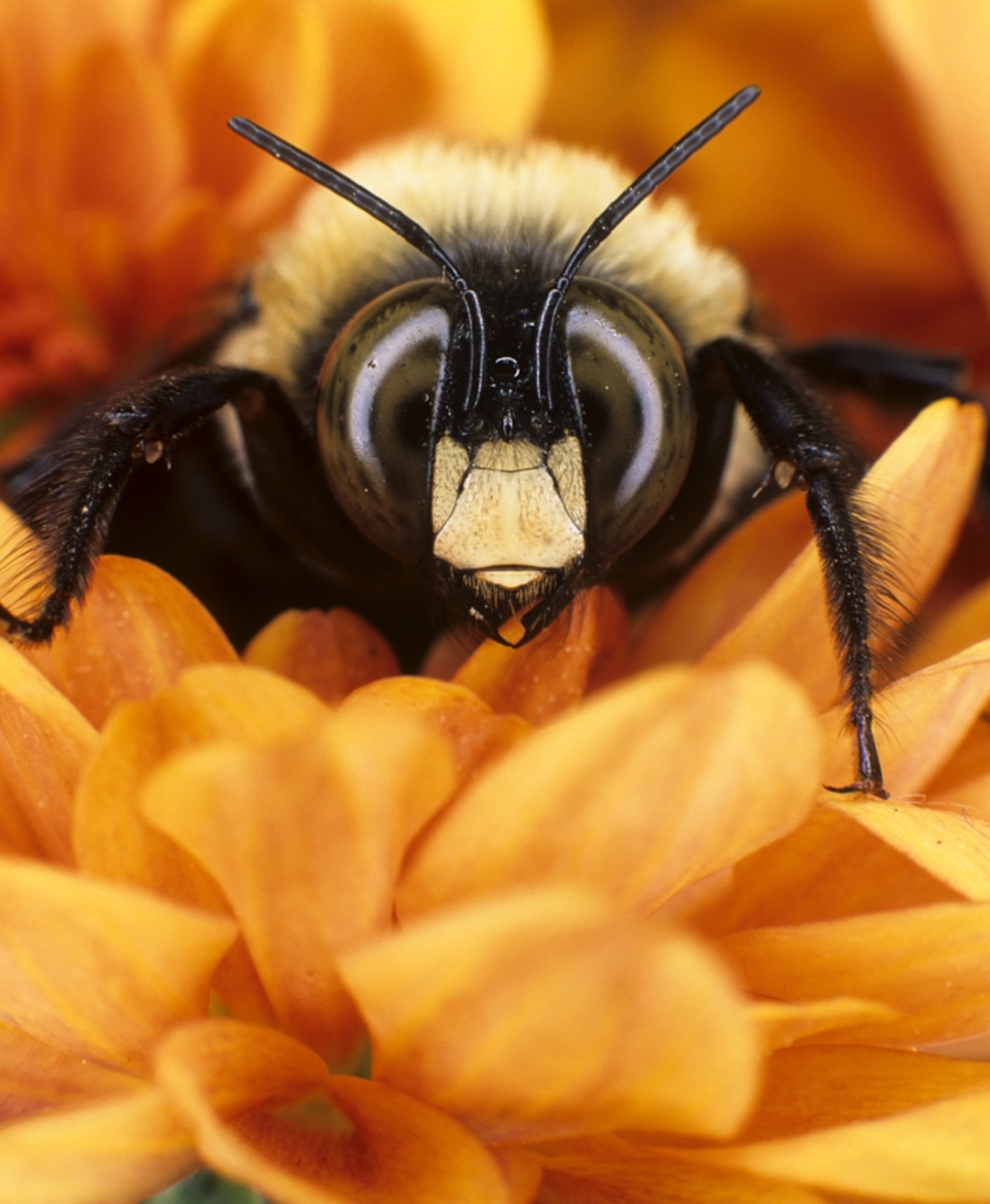
Bumblebees Taking a Nosedive in North America
Four species have fallen by up to 96 percent in 20 years, study finds.
Four bumblebee species once common across North America have suffered precipitous—and so far mysterious—declines, a new study shows.
Within the past 20 years abundances of the bee species Bombus occidentalis, B. affinis, B. pensylvanicus, and B. terricola have plummeted by up to 96 percent. (Related: "Mystery Bee Disappearances Sweeping U.S.")
The finding is based on a new analysis of more than 73,000 museum collections of bumblebees, which showed where bees had been found over the last century, as well as collections of wild bees across the United States. The study looked at 8 of the 50 known bumblebee species in North America. (Get bumblebee wallpaper.)
"We found that yes, indeed, [these four species] are seriously declining, but there are some other species doing very well," said study co-author Sydney Cameron of the University of Illinois' department of entomology.
The discovery makes it harder to pinpoint pesticides or climate change as a cause for the bug die-off, because those factors wouldn't explain why other bumblebee species in the same areas have survived.
One possibility is that the four species in crisis may all be infected with the invasive Nosema bombi fungus, which was found in greater quantities on the dying bumblebees than on relatively healthy species studied by Cameron's team.
And bees reared in Europe, where the fungus is more virulent, were imported to California in the early 1990s—right before the bees began to die off. (Related blog: "International Rescue Planned for Endangered English Bumblebee.")
But the link isn't certain yet.
"We're at this frustrating stage where there's a lot of circumstantial evidence to say that these species are declining because of this pathogen," Cameron said. "But we don't have direct evidence. We have no cause and effect."
Bumblebees Highly Efficient "Farmworkers"
Like honeybees, bumblebees rely on pollen as a source of protein. In addition to their wild work, bumblebees are widely used as pollinators for multibillion-dollar commercial crops, such as blueberries and tomatoes. (Related: "Bees Like It Hot—Pollinators Prefer Warm Flowers, Study Reveals.")
Theoretically, a bee imported from Europe carrying Nosema bombi could have escaped into the wild through a greenhouse vent and infected its wild brethren.
In fact, the bee die-off seen in the new study "look[s] very much like a pattern you'd find with a newly introduced disease," said Robbin Thorp, professor emeritus at the University of California, Davis. Thorp has been studying pollinators for decades and first noticed the decline of a fifth bumblebee species, B. franklini, in the late 1990s.
(Related: "Bee Viruses Spread via Flower Pollen.")
Although Thorp was not involved in the present study, he and Cameron will soon be working together to study more museum specimens "to see if we can pick up the fingerprint of the Nosema prior to and after this period of potential introduction," he said.
The researchers also studied the DNA of the bee species and found that the declining species had less genetic diversity than the species doing well—a trait often seen in species whose populations are isolated, or fragmented, resulting in increased inbreeding.
"They seem to be doing a lot of moving around," Cameron said of the bees. "They're not fragmented. But at the same time they have lower genetic diversity, and we don't know why."
Figuring out the exact cause of the bumblebee declines may be crucial for farmers, as bumblebees are even more efficient pollinators than honeybees. That's because the larger bees' high-frequency buzzing is just right for opening a flower's pollen-holding pores.
"You could use honeybees. You could throw thousands of colonies at [tomato plants]. But bee for bee, they're nowhere near as efficient," Cameron said. "A lot of flowers depend on this large, bumbly bee."
The bumblebee declines are reported in this week's issue of the journal Proceedings of the National Academy of Sciences.





